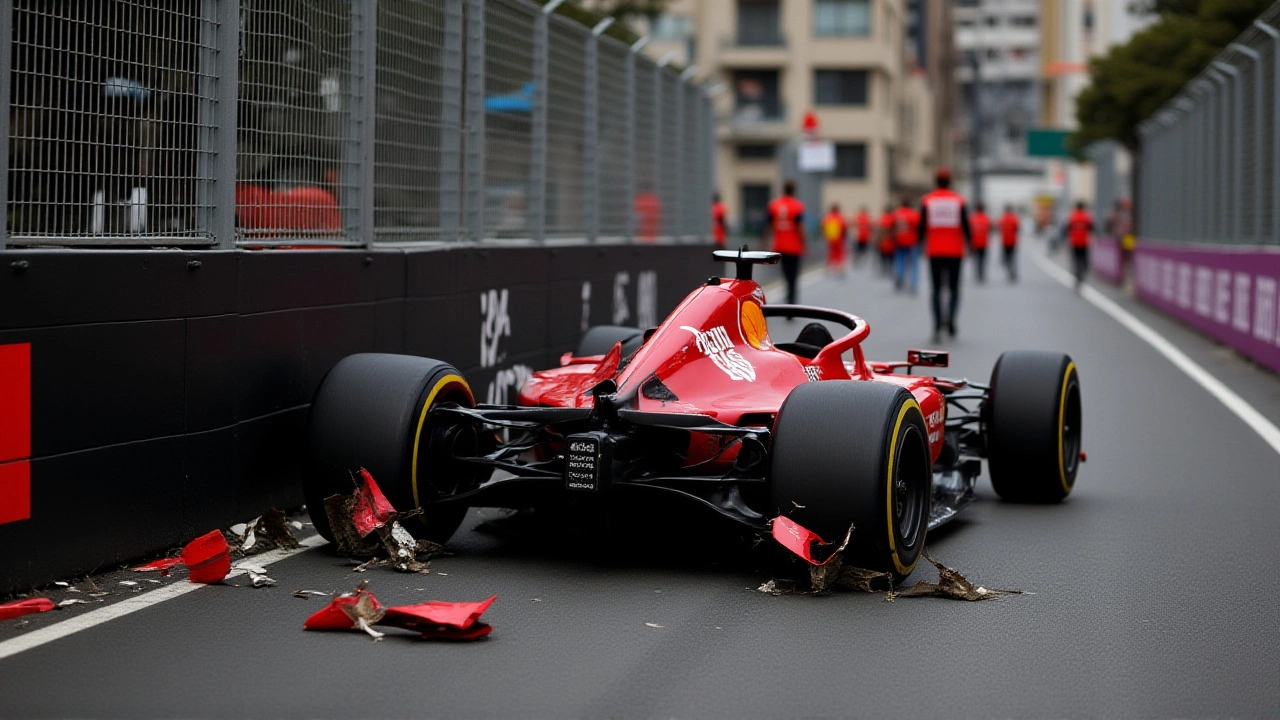Qualifying Chaos
When we talk about Qualifying Chaos, the unpredictable, high‑pressure moments that decide grid positions in motorsport, also known as qualifying mayhem, we’re really describing a core part of racing culture. It starts with the Qualifying session, a timed run where drivers push for the fastest lap to set the starting order and often ends with a Pole position, the coveted front‑row spot that can dictate race strategy. In series like MotoGP, the premier motorcycle grand prix championship, qualifying chaos can be even more volatile because riders balance grip, lean angle, and bike setup in seconds.
This chaos isn’t just about who gets the fastest lap; it shapes the entire weekend. A sudden rain shower can turn a dry qualifying session into a scramble for dry‑track time, forcing teams to adapt car setup on the fly. That adaptation directly influences the pole position outcome, which in turn often predicts the race winner. In Formula 1, we’ve seen qualifying rain swaps scramble the grid, turning a favorite into a mid‑pack starter. The link between qualifying chaos and race strategy is a classic cause‑and‑effect chain that fans love to dissect.
Track design also plays a huge role. A circuit with a long straight followed by a tight hairpin forces drivers to choose between outright speed and braking stability. The optimal racing line—another key concept—becomes a battlefield during qualifying. Drivers experiment with different entry points to shave tenths off their lap, and the fastest line often becomes the template for the race itself. When a track’s layout changes, as it did for the recent MotoGP calendar, the whole qualifying dynamic shifts, creating fresh chaos for teams to manage.
Looking ahead, the future of auto racing promises new layers of qualifying chaos. Electric race cars bring instant torque, meaning acceleration zones can be exploited differently than with internal‑combustion engines. Autonomous qualifying trials are already testing how AI can find the fastest line without human intuition, adding a tech‑driven twist to the traditional chaos. These innovations mean the definition of a clean lap will keep evolving, and the excitement around qualifying will stay fresh.
Even hypercars, those ultra‑exclusive machines built for extreme performance, add flavor to the mix. While they rarely appear in standard series because of cost and regulation, when a hypercar like the Porsche 918 participates in a special qualifying event, its raw power creates a different kind of chaos—one where tire wear and fuel consumption become critical variables. This shows how vehicle class influences qualifying tactics across motorsport.
Driver skill and car setup remain the heart of the matter. A well‑balanced setup can turn a chaotic weather window into a masterclass lap, while a mis‑tuned car will struggle even on a perfect day. Understanding how suspension settings, aerodynamics, and tyre choices interact helps teams tame the chaos long enough to lock in a pole position. It’s a delicate dance that separates seasoned pros from rookies.
The contrast between MotoGP and Formula 1 qualifying highlights how series‑specific rules shape the chaos. MotoGP’s rolling starts, two‑session format, and bike‑specific tyre compounds create a different rhythm than F1’s three‑part knockout system. Both aim to crown the fastest starter, but the pathways and pressure points vary, giving fans a rich tapestry of qualifying stories to follow.
Below, you’ll find a curated collection of articles that dive deeper into these topics—from royal shout‑outs at rugby finals (yes, they’re part of the wider sports buzz) to the latest boxing showdowns that echo the same high‑stakes vibe as a nail‑biting qualifying lap. Whether you’re here for the tech, the drama, or the pure speed, this lineup captures the pulse of qualifying chaos across motorsport and beyond.

Verstappen Snags Pole at Azerbaijan GP as Qualifying Sets Red‑Flag Record
- Oct, 5 2025
- Jenson Lockhart
- 0 Comments
Verstappen clinches pole at the 2025 Azerbaijan GP as qualifying sets a record six red flags, while Sainz and Lawson storm the midfield amid top‑team eliminations.